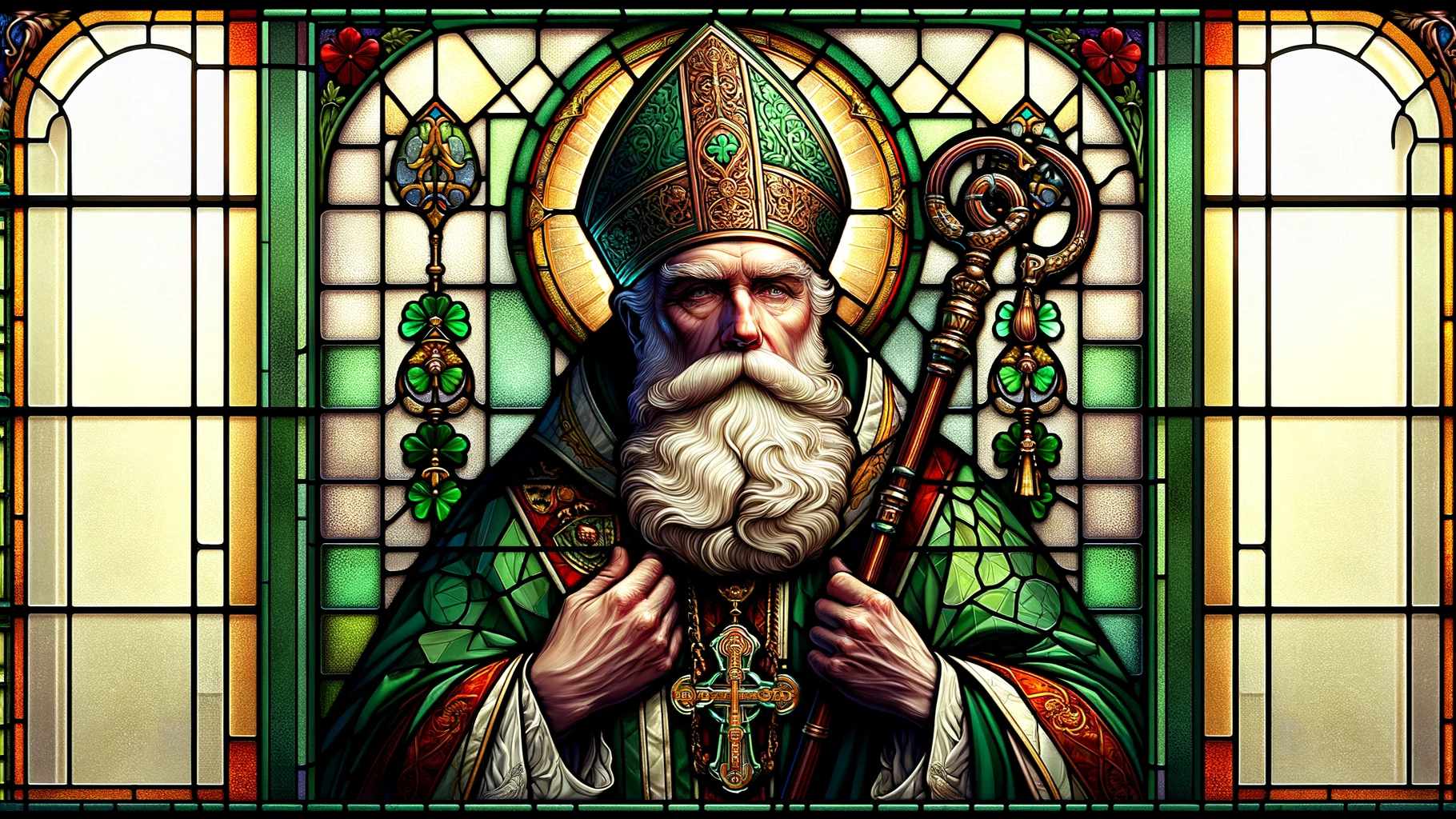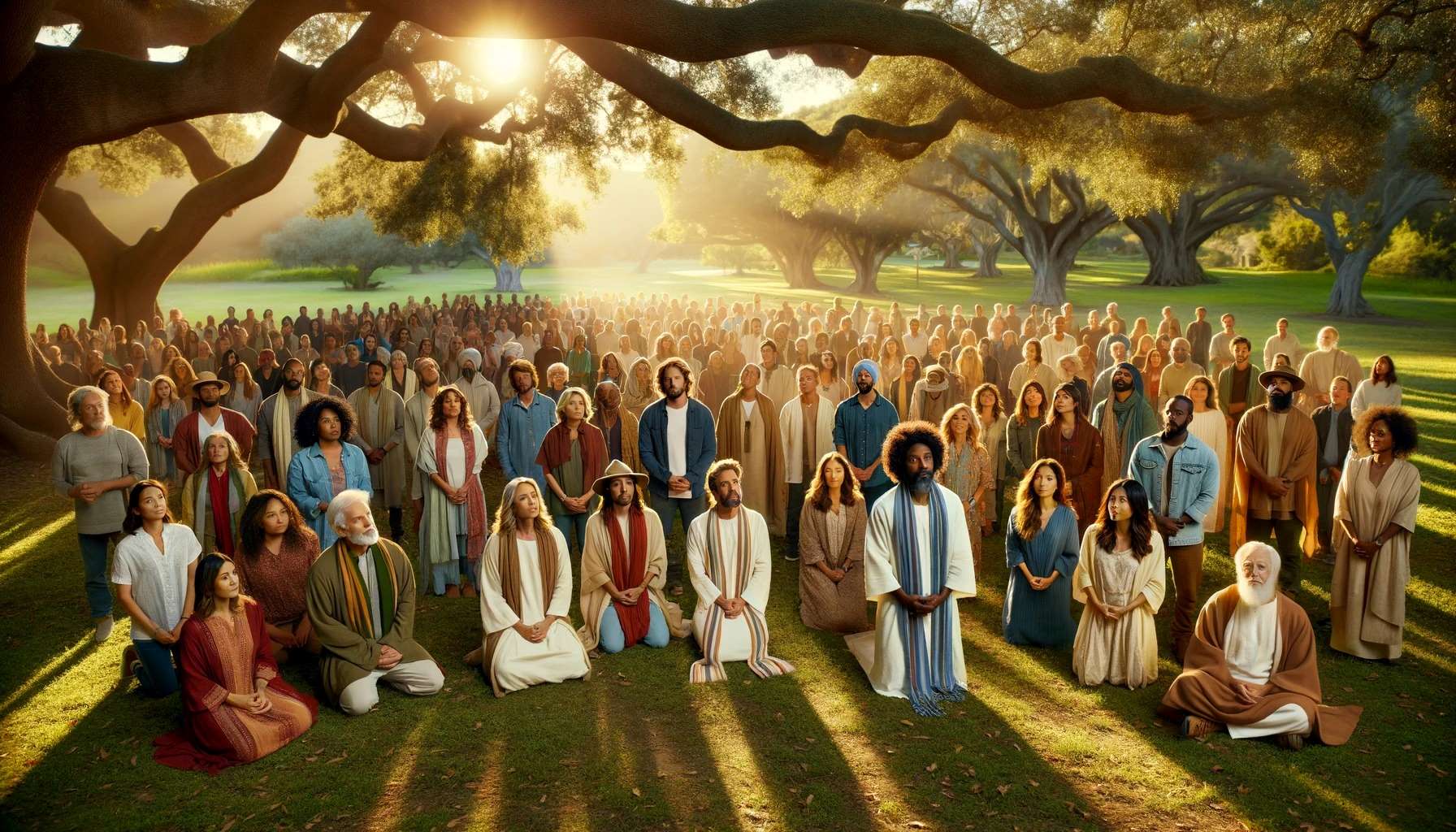Home>Christian Videos>Bible Stories>What Religion Is The Church Of Jesus Christ Of Latter-Day Saints


Bible Stories
What Religion Is The Church Of Jesus Christ Of Latter-Day Saints
Published: March 2, 2024
Jason DeRose, Managing Editor at Christian.net, uses his expertise in religion and journalism to deepen understanding of faith's societal impacts. His editorial leadership, coupled with a strong academic background, enriches the platform’s diverse content, earning him recognition in both journalism and religious circles.
Discover the significance of Bible stories in the teachings of The Church of Jesus Christ of Latter-Day Saints. Explore the religious perspective on these timeless tales.
(Many of the links in this article redirect to a specific reviewed product. Your purchase of these products through affiliate links helps to generate commission for Christian.net, at no extra cost. Learn more)
Table of Contents
- History of The Church of Jesus Christ of Latter-Day Saints
- Beliefs and Practices of The Church of Jesus Christ of Latter-Day Saints
- Organization and Leadership of The Church of Jesus Christ of Latter-Day Saints
- Scriptures and Teachings of The Church of Jesus Christ of Latter-Day Saints
- Missionary Work and Outreach of The Church of Jesus Christ of Latter-Day Saints
History of The Church of Jesus Christ of Latter-Day Saints
The history of The Church of Jesus Christ of Latter-Day Saints, often referred to as the LDS Church or the Mormon Church, dates back to the early 19th century in upstate New York. The church was officially founded by Joseph Smith on April 6, 1830. According to Smith, he was visited by God the Father and Jesus Christ in 1820, which led to a series of additional divine visitations and the eventual restoration of the true gospel. The church faced persecution and hardship in its early years, eventually leading to the migration of its members to the western United States. Under the leadership of Brigham Young, the Mormons settled in what is now Utah, where they established a thriving community and continued to grow in numbers and influence.
The history of the LDS Church is marked by a series of significant events, including the publication of the Book of Mormon in 1830, the martyrdom of Joseph Smith and his brother Hyrum in 1844, and the trek westward to the Salt Lake Valley in 1847. These events have shaped the identity and resilience of the church and its members, contributing to a rich tapestry of faith, sacrifice, and perseverance.
The church has since expanded globally, with millions of members in various countries around the world. Its history is characterized by a commitment to missionary work, community service, and the promotion of family values. The LDS Church has also been involved in various humanitarian efforts, disaster relief, and initiatives to alleviate poverty and suffering worldwide. The history of The Church of Jesus Christ of Latter-Day Saints is a testament to the enduring faith and dedication of its members, as well as its ongoing impact on the religious landscape.
Beliefs and Practices of The Church of Jesus Christ of Latter-Day Saints
The Church of Jesus Christ of Latter-Day Saints, often referred to as the LDS Church, has a distinctive set of beliefs and practices that distinguish it from other Christian denominations. Central to its beliefs is the concept of modern-day revelation, which asserts that God continues to communicate with His children through chosen prophets and apostles. The church recognizes the Bible, the Book of Mormon, the Doctrine and Covenants, and the Pearl of Great Price as scripture, and it teaches that these texts complement and clarify each other. The LDS Church also emphasizes the eternal nature of families and the importance of temple ordinances, such as baptism for the dead and eternal marriage, which are believed to unite families for eternity. Additionally, the church adheres to a strict code of health known as the Word of Wisdom, which prohibits the consumption of alcohol, tobacco, coffee, and tea.
In terms of practices, the LDS Church places a strong emphasis on missionary work, with young men and women encouraged to serve full-time missions to share their faith with others. The church also promotes a strong sense of community and service, with members actively participating in welfare and humanitarian efforts both locally and globally. Regular attendance at Sunday worship services, participation in family home evenings, and adherence to a set of moral and ethical standards are also integral to the daily lives of LDS Church members. The church's emphasis on self-reliance, education, and personal development is reflected in its extensive network of seminaries and institutes, which provide religious education for youth and young adults.
The beliefs and practices of The Church of Jesus Christ of Latter-Day Saints are deeply rooted in its unique theological doctrines and historical development. These beliefs and practices shape the daily lives and spiritual experiences of its members, fostering a strong sense of identity and purpose within the LDS community.
Organization and Leadership of The Church of Jesus Christ of Latter-Day Saints
The organization and leadership of The Church of Jesus Christ of Latter-Day Saints are structured in a hierarchical manner, reflecting a combination of ecclesiastical and administrative elements. At the head of the church is the First Presidency, consisting of the president and two counselors, who are regarded as prophets, seers, and revelators. The current president is Russell M. Nelson, who is considered the highest authority and spiritual leader of the church. The Quorum of the Twelve Apostles, led by the President of the Quorum, is the second-highest governing body and is responsible for overseeing the affairs of the church worldwide. These apostles are regarded as special witnesses of Jesus Christ and play a crucial role in guiding and directing the church.
Beneath the First Presidency and the Quorum of the Twelve Apostles are various other leadership positions, including the Seventy, Area Seventies, and local priesthood leaders. The Seventy are called to be special witnesses of Christ to the world and serve in various administrative capacities, while Area Seventies oversee specific geographic regions and provide support to local congregations. Local priesthood leaders, such as bishops and stake presidents, are responsible for the spiritual and temporal welfare of church members within their respective congregations and stakes.
The church is further organized into wards (congregations) and stakes (groups of wards), each led by a bishop or branch president and a stake president, respectively. These leaders are assisted by a council of men and women who hold various auxiliary and priesthood leadership positions. The women's organization, known as the Relief Society, plays a vital role in supporting the spiritual and temporal needs of women in the church, while the Young Men and Young Women organizations focus on the youth. Additionally, the Primary organization provides religious instruction and activities for children.
The organizational structure of The Church of Jesus Christ of Latter-Day Saints is designed to facilitate the spiritual growth and well-being of its members, as well as to ensure the efficient administration of its global operations. This hierarchical system of leadership and governance reflects the church's commitment to central authority, divine guidance, and the principle of continuing revelation.
Scriptures and Teachings of The Church of Jesus Christ of Latter-Day Saints
The Church of Jesus Christ of Latter-Day Saints regards several texts as scripture, each of which plays a significant role in shaping its teachings and doctrines. The Bible, including the Old and New Testaments, is considered the word of God and is viewed as a foundational source of divine guidance and instruction. In addition to the Bible, the LDS Church recognizes the Book of Mormon as another testament of Jesus Christ. This sacred text, translated by Joseph Smith, is believed to contain the religious history of ancient inhabitants of the Americas and to complement the teachings found in the Bible. The Doctrine and Covenants, a collection of revelations and modern-day prophecies, and the Pearl of Great Price, which includes additional scripture and writings of Joseph Smith, are also considered essential to the church's teachings and beliefs.
The teachings derived from these scriptures emphasize the central role of Jesus Christ in the plan of salvation and the eternal progression of humanity. The LDS Church teaches that through the Atonement of Jesus Christ, individuals can be redeemed from sin and find hope, healing, and purpose in this life and the next. The concept of eternal families, rooted in the belief that family relationships can endure beyond mortality, is a fundamental teaching that shapes the church's emphasis on marriage, parenthood, and genealogy. The LDS Church also emphasizes the principle of continuing revelation, asserting that God continues to communicate with His children through chosen prophets and apostles, guiding and directing the affairs of the church and its members.
The teachings of The Church of Jesus Christ of Latter-Day Saints are further characterized by a strong emphasis on moral and ethical conduct, personal integrity, and the pursuit of spiritual knowledge and understanding. The church's teachings on charity, service, and compassion reflect its commitment to fostering a sense of community, unity, and love among its members and within the broader human family. The scriptures and teachings of the LDS Church serve as a source of spiritual nourishment, guidance, and inspiration for its members, shaping their worldview, values, and daily practices.
Missionary Work and Outreach of The Church of Jesus Christ of Latter-Day Saints
The Church of Jesus Christ of Latter-Day Saints is widely known for its robust missionary program, which plays a central role in its outreach efforts. Young men and women, typically between the ages of 18 and 25, are encouraged to serve full-time missions, dedicating two years for young men and 18 months for young women, to share the message of the restored gospel with people around the world. These missionaries are often seen in pairs, dressed in modest attire, and are recognized by their distinctive name tags. Their primary focus is to teach others about the beliefs and practices of the LDS Church, invite individuals to come unto Christ, and help those who are interested in joining the church to prepare for baptism.
The missionary work of The Church of Jesus Christ of Latter-Day Saints extends beyond traditional proselytizing to encompass various forms of community service and humanitarian aid. Missionaries are actively involved in local service projects, disaster relief efforts, and initiatives to address social and economic challenges in the areas where they serve. This approach reflects the church's commitment to not only sharing its message but also making a positive impact on the lives of individuals and communities in need.
In addition to full-time missionaries, the LDS Church also relies on the efforts of its members to participate in missionary work and outreach. Members are encouraged to share their faith with others, engage in meaningful conversations about spiritual matters, and invite friends and acquaintances to church activities and events. This grassroots approach to missionary work is seen as an essential part of the church's efforts to reach out to individuals who may be seeking greater meaning and purpose in their lives.
The church's missionary program is further supported by a strong emphasis on the use of modern technology and media to share its message with a global audience. The church's official website, social media channels, and mobile apps provide resources and information about its beliefs, practices, and local congregations. Additionally, the church produces a variety of multimedia materials, including videos, music, and printed materials, to help convey its message and connect with individuals from diverse backgrounds and cultures.
Overall, the missionary work and outreach efforts of The Church of Jesus Christ of Latter-Day Saints reflect its commitment to fulfilling what its members believe to be a divine mandate to share the gospel of Jesus Christ with all the world. This proactive and multifaceted approach to missionary work underscores the church's dedication to reaching out to individuals, families, and communities, and offering them the opportunity to learn about and embrace its teachings and principles.















